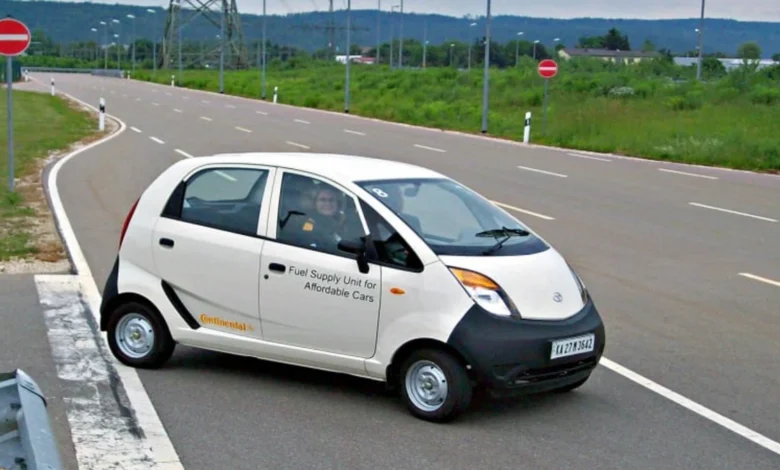The Tata Nano: A Revolutionary Affordable Car

The Tata Nano is more than just a car; it’s a symbol of innovation and accessibility in the automotive world. Introduced by Tata Motors in 2008, the Tata Nano was designed to be the world’s cheapest car, making vehicle ownership possible for millions of people in developing countries. This article delves into the history, design, and impact of the Tata Nano. For a comprehensive overview, you can visit https://guia-automovil.com/2019/08/01/tata-nano.
The Vision Behind the Tata Nano
The idea behind the Tata Nano was to create an affordable car for the masses. Ratan Tata, the chairman of Tata Motors, envisioned a safe and economical car that could replace the two-wheelers commonly used by families in India:
- Affordability and Accessibility: The Tata Nano was priced at around $2,500, making it the most affordable car in the world at the time.
- Target Market: The car was aimed at the growing middle class in India, who needed a safe and economical mode of transportation.
- Innovation in Design: The Nano’s compact design, with a rear-engine layout, was both innovative and practical, allowing for more interior space despite its small footprint.
Design and Engineering of the Tata Nano
The Tata Nano’s design was a marvel of engineering, balancing cost-effectiveness with functionality:
- Compact Size: The Nano was just 3.1 metres long, making it easy to manoeuvre in crowded urban environments.
- Engine and Performance: Powered by a 624cc two-cylinder engine, the Nano was capable of reaching speeds of up to 65 mph, making it suitable for both city and highway driving.
- Fuel Efficiency: With a fuel efficiency of around 50 miles per gallon, the Nano was designed to be economical to run.
- Interior Features: Despite its low price, the Nano offered a surprising amount of interior space, with seating for four adults.
For more details on the technical specifications, check out https://guia-automovil.com/2019/08/01/tata-nano.
The Challenges Faced by the Tata Nano
Despite its groundbreaking concept, the Tata Nano faced several challenges in the market:
- Safety Concerns: Critics pointed out that the Tata Nano lacked many safety features found in more expensive cars, which raised concerns among potential buyers.
- Brand Perception: The Nano’s positioning as the “world’s cheapest car” led to a stigma, with some consumers reluctant to purchase it due to concerns about social status.
- Production and Distribution Issues: The initial rollout of the Nano was marred by production delays and distribution challenges, which impacted its early success.
The Impact of the Tata Nano on the Automotive Industry
The Tata Nano left a lasting impact on the global automotive industry:
- Inspiration for Other Low-Cost Vehicles: The success and challenges of the Tata Nano inspired other manufacturers to explore the low-cost car market.
- Highlighting the Importance of Affordability: The Nano demonstrated that there is a significant demand for affordable vehicles in developing countries.
- Advancements in Automotive Engineering: The innovations in the Nano’s design and production processes have influenced the development of other compact and economical cars.
The Legacy of the Tata Nano
Although production of the Tata Nano ceased in 2018, its legacy lives on:
- A Symbol of Indian Innovation: The Nano remains a symbol of India’s growing capabilities in automotive engineering and manufacturing.
- Cultural Impact: The Nano has become a cultural icon in India, representing the aspirations of millions of people who dream of owning a car.
- Continuing Influence: The lessons learned from the Nano’s journey continue to influence the design and marketing of low-cost vehicles worldwide.
For a deeper dive into the legacy of the Tata Nano, visit https://guia-automovil.com/2019/08/01/tata-nano.
Conclusion
The Tata Nano was a bold experiment in making car ownership accessible to the masses. While it faced challenges, its impact on the automotive industry and its cultural significance cannot be overstated. The Nano’s story is a testament to the power of innovation and the importance of addressing the needs of consumers in emerging markets. For more information on the Tata Nano, be sure to check out https://guia-automovil.com/2019/08/01/tata-nano.
FAQs
What made the Tata Nano so affordable?
The Tata Nano’s affordability was achieved through innovative engineering, cost-effective materials, and streamlined production processes.
Is the Tata Nano still in production?
No, production of the Tata Nano was discontinued in 2018 due to declining sales and market challenges.
What was the target market for the Tata Nano?
The Tata Nano was primarily aimed at middle-class families in India who needed an affordable and safe mode of transportation.
Did the Tata Nano have safety features?
While the Tata Nano met basic safety standards, it lacked many of the advanced safety features found in more expensive cars.
What is the legacy of the Tata Nano?
The Tata Nano remains a symbol of innovation and affordability, inspiring future developments in low-cost vehicles.




